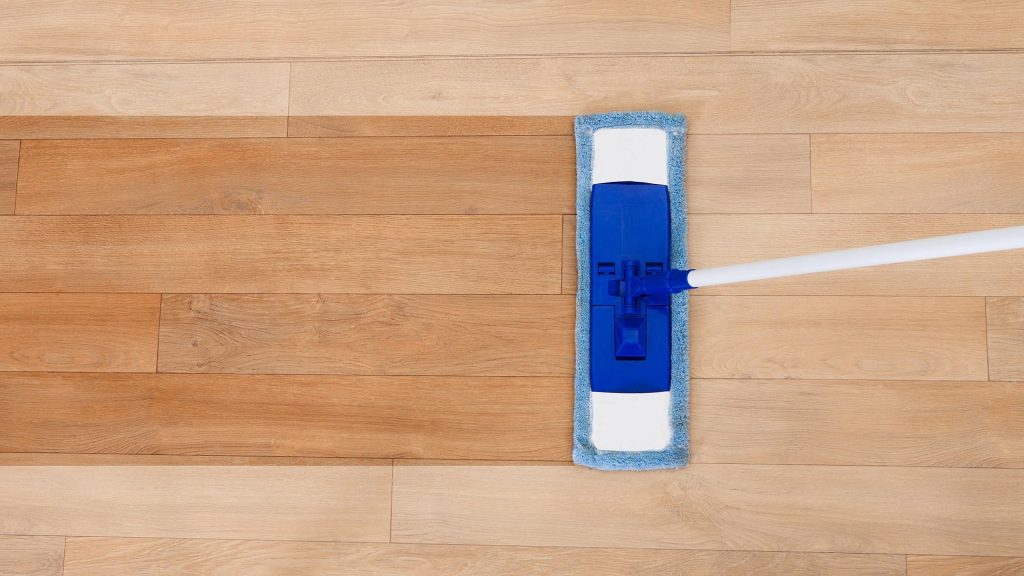Vinyl floors are durable, affordable, and come in a variety of finishes to match your home’s interior design. Cleaning your vinyl floors is easy, which is another benefit to installing them in the home.
What’s the best way to clean vinyl floors? You can vacuum and mop your vinyl floors, but you must take care to maintain them properly so that they look their best.
With that in mind, here’s everything you need to know about how to clean vinyl floors. We’ve got all the tips and tricks so your floors look great for longer.
Contents
Table of Contents
ToggleHow Often Should You Clean Vinyl Floors?
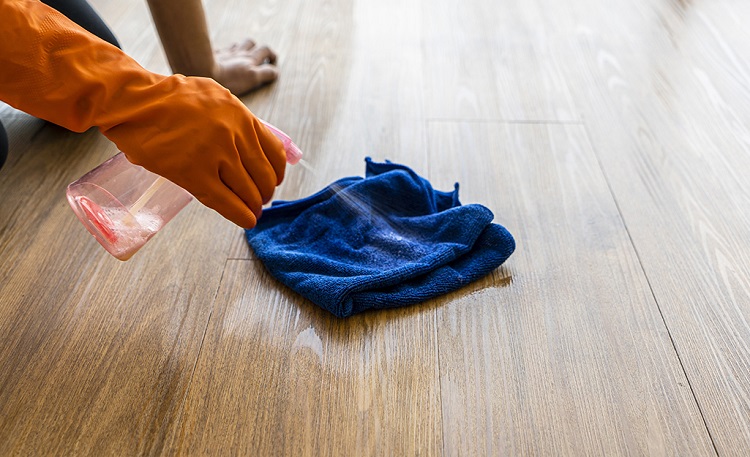
The big question you might have when it comes to looking after your vinyl floors is how regularly you should clean them. This depends on where the vinyl floors are installed in the home.
If you have vinyl floors in high-traffic areas of the home, such as the kitchen, it’s a good idea to sweep or vacuum them every day.
This removes dirt and prevents gritty debris from scratching the vinyl. In other areas of the home, you can vacuum less frequently.
When it comes to mopping your vinyl floors, you should have a mop at hand so that you can quickly remove spills as soon as they happen. This prevents the vinyl flooring from getting stained.
As with other types of floors, you should generally mop your home at least once a week. This will help you stay on top of your home’s hygiene while also ensuring your floors are well maintained.
How To Clean Vinyl Floors
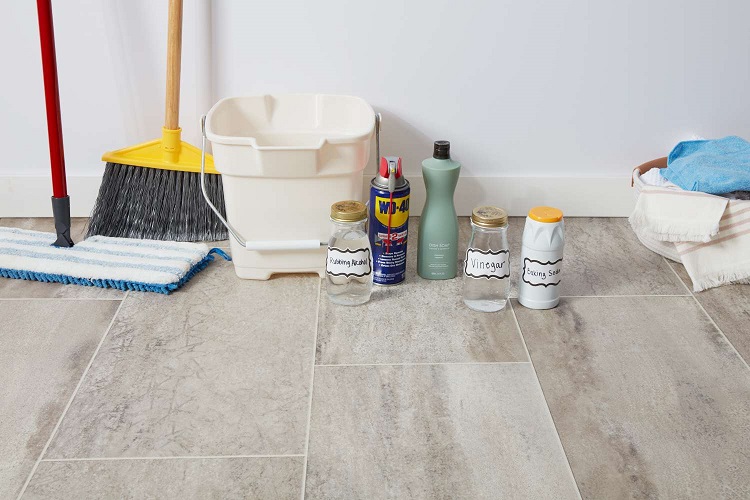
When cleaning your vinyl floors, you will need some tools and equipment. These include a vacuum cleaner or broom, a wet mop, a bucket, and microfiber cleaning cloths.
These work well to collect dust and debris without spreading it around your floor.
You should also have the following items: warm water, distilled white vinegar (or cider vinegar) liquid dishwashing soap that has a degreaser included, baking soda, rubbing alcohol, and WD-40.
If you want to remove stains, you will need a few other cleaning ingredients, which we’ll get to later in the article.
Steps To Follow When Cleaning Vinyl Floors
Now that you have all the items, tools, and cleaning ingredients you require to clean your vinyl floors properly, follow these steps.
Sweep Or Vacuum Your Vinyl Floors
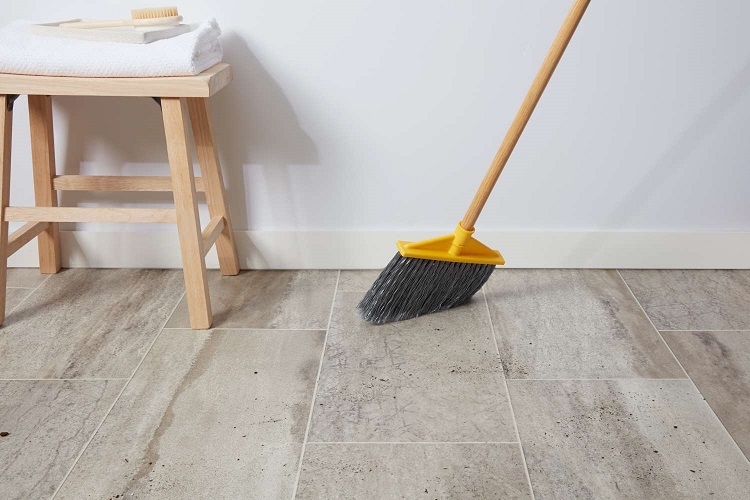
Start by removing debris and dirt with the use of a broom or vacuum cleaner. This ensures that you remove debris that can scratch the vinyl, damaging it or making it lose its shiny appearance.
If you’re using your vacuum cleaner, you need to ensure it’s safe for use on vinyl and that you vacuum on a setting that doesn’t use a beater bar. This is because a beater bar can cause scuffs or dents in the flooring.
Mop Your Floor
Fill a bucket with warm water and a few drops of dishwashing liquid. Avoid putting too much dishwashing liquid as this can leave a sticky residue on your floors.
If you don’t want to use dishwashing liquid, another simple and natural ingredient to use on your vinyl floor is a blend of cider vinegar and water.
Mix a cup of cider vinegar with a gallon of hot water. If you want more disinfecting power, you can use white vinegar instead.
If, on the other hand, you want to make dull vinyl floors shine, add a few drops of baby oil to the water-vinegar cleaning solution.
When mopping your floor, wring out most of the water. Wringing out excess water from the mop will help to prevent you from putting too much water on the vinyl floors.
This can damage them by causing moisture to seep into the vinyl, which can make it warp.
While your vinyl flooring might be waterproof, some older types of vinyl floors have a fabric backing that can curl or warp when exposed to a lot of water, so you have to be careful.
Another good reason why you should rinse and wring the mop regularly during the cleaning session is that it will prevent you from transferring debris from one part of the room to another.
Pay Attention To Removing Stains

Now that you’ve mopped your vinyl floor, you can see if there are any stains on it.
- To remove food stains, mix together one teaspoon of water and two tablespoons of baking soda, and place it on the stain. Scrub at the stain with a microfiber cloth.
- If you have stronger stains, such as grease-based stains, wet a microfiber cloth in rubbing alcohol and scrub the stain from the outside edge of the stain towards its center. This prevents the stain from spreading across the vinyl.
Remove Any Scuffs
Scuffs can easily happen on your vinyl floors as a result of your shoes in high-traffic areas or even the legs of furniture pieces that can scratch them, such as when you move the furniture around during the cleaning process.
If you’ve noticed some scuffs in the vinyl flooring, you can remove them easily with some WD-40. Spray the scuff directly with a bit of WD-40 and then buff the area with a clean, dry microfiber cloth.
To prevent scuffs in the future, consider using padded feet underneath the legs of furniture so that they can’t make contact with the vinyl flooring. You might also want to consider removing your shoes before you enter your home.
Consider Rinsing The Vinyl Floors
If you used a bit too much liquid soap to wash your floors when you mopped them, you will have to rinse the floor with water.
However, if you did a quick cleanup and didn’t use too much soap, you don’t have to rinse the floor so you can skip this step.
If your floor is sticky from soap residue, you can eliminate it with some water and vinegar. This will also make the floor shine.
Mix water with a cup of distilled white vinegar, then apply it to sections of the floor. Mop it so that you don’t leave puddles of water on the floor.
Let The Floor Air Dry
Once you’ve mopped your vinyl floors, let them air dry. You can speed up the process by opening windows or putting on a fan.
Things To Avoid When Cleaning Your Vinyl Floors

While your vinyl floor is quite durable, there are some cleaning methods and supplies that can damage it. Here are the things to avoid.
- Don’t apply polish or wax to vinyl flooring. These products will accumulate and damage the finish of the floor. Since vinyl floors are non-porous, the polish or wax will remain on the surface and collect dust. This can cause the vinyl floor to lose its color or become dull over time.
- Avoid using a stiff-bristled brush or steel wool when cleaning a vinyl floor as this can easily cause scratches.
- If you have to move furniture around to clean, never pull it across the floor. Place a sheet of plywood or even a towel underneath the furniture to move it so you don’t scratch your vinyl floors.
- Avoid using harsh chemicals such as bleach on your vinyl floor. This is too abrasive and can damage the finish of the vinyl.
- Avoid using a steam cleaner on your vinyl floors. Unless the steam cleaner is marked as being safe for vinyl or certain types of vinyl, you should avoid it. The high temperature of the water and steam can penetrate the vinyl and cause it to warp.
- Prevent too much sunshine from getting onto your vinyl floors. The harsh UV rays can cause damage to them, such as by causing their color to fade. You should install curtains or blinds in rooms where you’ve installed vinyl floors in the home and keep them closed at times of the day when sunlight streams into the home.
Related Questions
Can you use Murphy’s Oil Soap on vinyl floors?
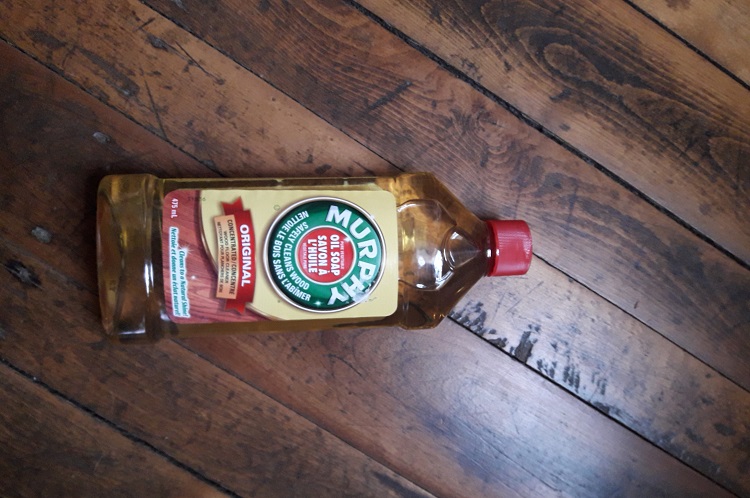
You can use Murphy’s Oil Soap on vinyl floors because it’s transparent and 98 percent derived from natural ingredients so it won’t be too harsh.
Should you spot test your vinyl floors before cleaning them?
You should always spot test a cleaning product or DIY cleaning solution in one small section of the vinyl floor before you clean your entire floor. This is to guarantee that it won’t cause issues such as discoloration.
Conclusion
If you have beautiful vinyl floors, you want to ensure you keep them in good condition. We’ve looked at everything you need to know about how to clean them as well as what to avoid so you don’t accidentally damage them.

